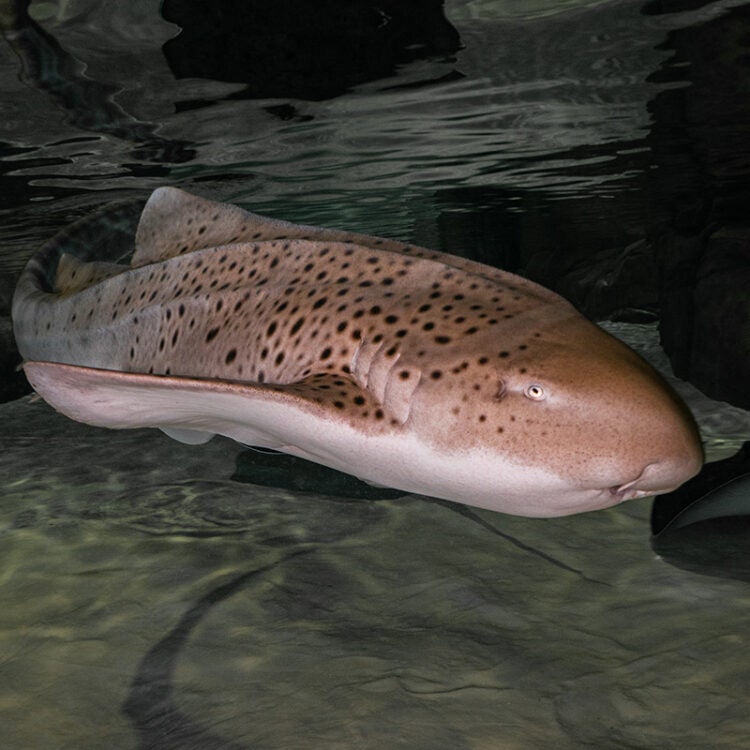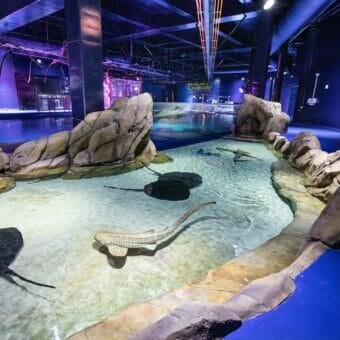-
Size
12 feet (3.7 m) -
Diet
Benthic invertebrates and small fishes -
Range
Indian Ocean and West Pacific -
Habitat
Coral reefs, usually in areas with sandy seafloor
Physical Characteristics
- The maximum length of 12 feet (3.7 m); its long tail may account for about half of the total body length.
- The body is cylindrical and thick, with prominent ridges along the flanks. The Head is broad and conical with a very rounded snout and fleshy barbels at the corners of the mouth. The upper lobe of the caudal fin is greatly elongated.
- Spiracles located behind the eyes allow this shark to rest motionless on the bottom and still circulate water over its gills.
- Coloration of adults is tan with dark spots.
- Juveniles are dark with yellowish bars, lending to the name, “zebra shark.”
Animal Fact
Sharks have multiple methods of reproduction – some species give birth to live young, while others, like the zebra shark, lay egg cases, called mermaids purses.
Diet / Feeding
- Diet consists primarily of benthic invertebrates such as snails, shrimp, crabs and sea urchins, as well as small fishes.
- Can fit into small crevices and holes in the reef as it searches for food.
Range / Habitat
- Occurs in the shallow waters of the Indian Ocean and West Pacific from South Africa to the Red Sea, from Pakistan, India and Southeast Asia to China, Indonesia and the Philippines and from Australia and New Caledonia to Southern Japan.
- Found on and adjacent to coral reefs, usually in areas with sandy seafloor.
Reproduction & Growth
- Oviparous, or egg-laying, species; female lays large, dark brown or purplish black egg cases.
- Newly hatched young are 8-10 inches (20-25 cm).
- Juveniles will begin feeding on their own in the protected reef shallows.
Conservation Status
- “Endangered” on the IUCN Red List.
Additional Information
- Nocturnal; rests on the ocean bottom during the day.
- A slow moving shark, considered harmless to humans.





